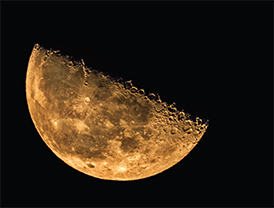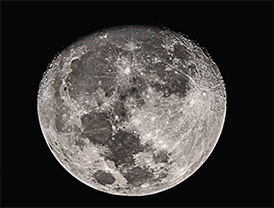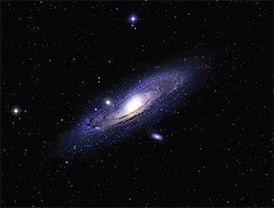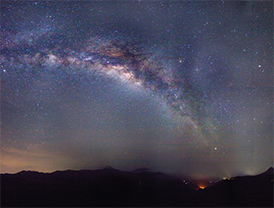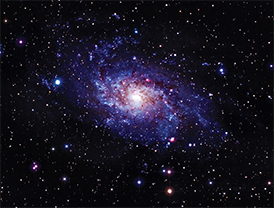Third Quarter Moon
Navaneeth Unnikrishnan mostly likes to capture the Milky Way and distant galaxies and nebulaes across the infinite sky. Most of his works are found at ww.facebook.com/navaneethunnikrishnanphotography1
As told to Tanika Godbole
Waxing Gibbous Moon Andromeda Galaxy
I am an Electronics and Communication student studying in Karnataka. My home town is Chombala, Vadakara, in the Calicut district of Kerala. I started photography two years ago with the help of YouTube tutorials and articles written by professional photographers. I love macro and landscape photography, but my interest in astrophotography began a year ago when I saw the Milky Way galaxy (the galaxy in which we are), shining in the sky after rainfall, which cleared the dust. All I can say about astrophotography is that it’s easy to pick up, but takes a lifetime to master. At that time, I had no idea how to photograph the night sky but still I gave it a try on my D-SLR, and was amazed with the result I got. A long exposure gives more detail to the image, which you cannot see with your eyes.
Space and astronomy was always of great interest to me, but taking up a career in that area was not possible, since I am really bad in mathematics. I searched the internet for articles on night sky photography, and found plenty of them. Luckily, my house is a little far away from big town areas, and has very little pollution, which was ideal for night sky photography. The question that I’m asked very often about my pictures is, “I’ve never seen anything like this in the sky before. Is this real?” Yes, this is real. The further you move away from cities the lesser the pollution is, and you get to see the beauty of the night sky. After a while I came to find an article about deep sky photography just using a D-SLR and a tripod, and an image processing method called stacking. I was amazed at the possibilities, and experimented myself. I connected with astrophotographers via social media networks and exchanged ideas, with satisfying results. I upgraded from using a 300mm lens to a telescope. Deep sky photography doesn’t require a high end D-SLR. I use one of Canon’s inexpensive models, the 1100D. Deep sky images cannot be shot in a single photo; you need dozens of images with a long exposure.These must be stacked later using software specifically designed for astrophoto stacking. A high ISO could create a lot of noise, which can later be cleared through other techniques. Several people wonder whether my pictures are NASA images. They’re just D-SLR images. It is all about pushing your camera to its limits. You need a lot of patience to photograph these beautiful sights, and a lot of time to process them too.
Lagoon Nebula (M8) Milkyway Panorama
Every time I upload a photo of deep sky and starscape on social networks, people ask how they are taken, and say they would like to learn. I take workshops on photographing the night sky. I’ve learned most of the photography and postprocessing through YouTube tutorials and experimentation.
Triangulum Galaxy (M33

